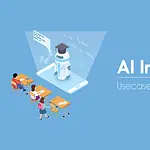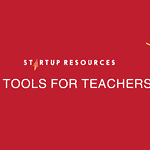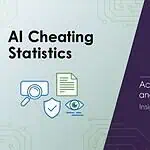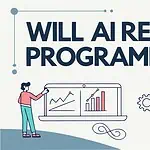92% of students now use AI tools, and 60% of K-12 teachers have started using them too. AI is already in classrooms, grading papers, answering questions, and creating lesson plans.
So the question isn’t really if AI is coming to education or will AI replace teachers. It’s already here. What you actually want to know is whether it’s going to replace you.
This article breaks down what AI can actually do right now, what it can’t, and what teachers think about it and gives you a straight answer about whether your job is at risk.
How AI Is Currently Being Used in Education
AI tools are showing up in classrooms faster than most people expected. Students are plugging them into their daily routines for everything from homework help to test prep. Teachers are starting to experiment too, but the numbers tell a different story about who’s actually using what.
Student Usage
According to recent data, 86% of students already use AI tools for their academic work. That includes writing help, homework support, and study prep. The usage is frequent too. About 30% of K-12 students are using AI every single day.
When it comes to specific tools, 66% of students rely on ChatGPT, while 25% use Grammarly for writing polish. Most students juggle about 2.1 different AI tools on average. Teachers see this happening. 64% report that their students use AI to generate written assignments.
Teacher Usage
Around 60% of K-12 teachers used AI tools during the 2024-2025 school year. That sounds substantial, but the regularity drops off. Only 32% use AI weekly. The tools help with creating worksheets, modifying materials for different learning needs, and building tests.
Higher education shows a similar pattern. About 61% of faculty use AI, but 88% of them use it minimally. It’s on their radar, but it hasn’t become part of their core teaching practice yet.
The Gap Between Student and Teacher Adoption
Students are sprinting ahead while teachers are still testing the waters. The 86% student adoption rate versus the 60% teacher adoption rate shows a clear gap. Even more telling is frequency.
Students use these tools daily, while most teachers stick to occasional experiments. That creates a disconnect where students are working with AI in ways their teachers might not fully understand yet.
What AI Can Replace in Teaching
Let’s be honest about where AI actually works. It handles the stuff that eats up your time but doesn’t require you to be in the room.
According to a recent survey, teachers using AI weekly save around 6 hours per week. That’s six weeks over a school year freed up from tasks that don’t need your judgment.
- Administrative tasks: AI generates worksheets, creates seating charts, drafts parent emails, and fills out progress reports. The paperwork that keeps you at your desk past 5 PM.
- Grading and assessment: Multiple choice, fill-in-the-blank, and basic math problems get graded instantly. AI can even provide initial feedback on writing assignments, flagging grammar errors and basic structure issues.
- Lesson planning support: AI pulls together resources, suggests activity variations, and adapts existing lesson plans for different learning levels. It’s like having a teaching assistant who never sleeps.
- Personalised learning delivery: AI tracks which students struggle with fractions versus word problems, then serves up practice problems matched to their level. It adjusts difficulty in real time based on how students perform.
What AI Cannot Replace in Teaching
AI can process data, but it can’t read a room. It can’t tell when a quiet kid is withdrawn because they’re being bullied or just need time to process.
- Emotional intelligence and empathy: When a student breaks down crying before a test, AI doesn’t pick up on the family crisis behind it. You do. You adjust deadlines, offer support, and know when to push versus when to give space.
- Building relationships: Trust doesn’t come from algorithms. Students open up because you remember their soccer game, notice when they seem off, or joke with them before class starts. That rapport keeps kids showing up.
- Complex classroom situations: Two students arguing, a lesson bombing halfway through, or a fire drill interrupting your flow. AI can’t pivot when the plan falls apart or mediate conflict between actual humans in real time.
- Teaching critical thinking and creativity: AI can explain what a metaphor is. You show students how to craft one that hits. You model the messy process of thinking through problems without clear answers.
- Mentorship and motivation: You’re the one who sees potential in a struggling student and convinces them to try harder. AI sends reminders. You inspire action because students want to prove something to you, not to software.
How Teachers Are Using AI Right Now
Teachers aren’t waiting for permission to experiment. They’re finding practical ways to weave AI into their daily routines, testing what works and what doesn’t.
- Creating materials and worksheets: AI generates quizzes, practice problems, and handouts in minutes instead of hours. Teachers tweak them to fit their classroom needs.
- Drafting communications: Parent emails, progress reports, and newsletters get a first draft from AI. Teachers edit for tone and accuracy before sending.
- Providing feedback: AI offers initial suggestions on student writing or problem-solving approaches. Teachers review and personalise the feedback before students see it.
- Differentiating instruction: Tools help adapt lessons for different reading levels or learning styles. One lesson plan becomes three versions without starting from scratch.
Challenges and Concerns
The excitement around AI in education comes with real worries that keep administrators up at night. There are certain factors that are concerning.
- Academic dishonesty: Students use AI to complete assignments, making it harder to assess actual learning. Teachers struggle to distinguish AI-generated work from student effort.
- Student over-reliance: Kids might lean on AI instead of developing critical thinking skills. The concern is they’ll get answers without understanding the process.
- Lack of training: Most teachers receive zero formal instruction on using AI effectively. They’re figuring it out through trial and error.
- Privacy and data security: Student information fed into AI tools could be stored or misused. Districts worry about compliance with privacy laws.
- Equity issues: Schools in wealthier areas have access to better AI tools, while under-resourced districts fall further behind. The digital divide grows wider.
What Teachers Say About AI
Ask teachers about AI, and you’ll get about ten different answers. Some see it as a lifeline. Others worry it’s the beginning of the end.
Job Security Fears
The anxiety is real. 33% of experts predict AI could threaten teaching jobs within 20 years. That stat keeps many teachers up at night. You can hear it in teacher lounges and online forums.
Time-Saving Benefits They Appreciate
Here’s what most teachers will admit: AI handles the grunt work surprisingly well. Those 6 hours saved per week? That’s real time they can spend actually teaching instead of formatting lesson plans or writing the same feedback for the twentieth time.
Nearly 60% agree that AI improves accessibility for students with disabilities. When it comes to administrative tasks, many teachers see AI as a colleague they didn’t know they needed.
Worries About Student Learning Impact
But here’s where the excitement stops. Teachers watch students copy-paste AI responses without thinking. They see critical thinking skills going unused. Some of them appreciate the efficiency.
Another part wonders what happens when students stop struggling through problems themselves. It’s the classic trade-off. And right now, 88% of faculty who use AI do so minimally because they’re still figuring out where the line should be.
So, Will AI Replace Teachers?
The short answer is no. But that doesn’t mean their job stays exactly the same.
Here’s what’s actually at risk: teachers who only deliver information, grade tests, and follow rigid lesson plans. If your main value is transmitting knowledge that students could get from a video or chatbot, you’re in a tough spot. Administrative roles focused purely on scheduling, grading, and paperwork might shrink too. Schools will look hard at positions where AI handles 80% of the work.
What’s safe? Teachers who build real relationships with students. The ones who notice when a kid is struggling before they ask for help. Teachers who adapt lessons on the fly when half the class looks confused. The ones students remember twenty years later because they made them feel seen. AI can’t replicate that, and it won’t in 5 or 10 years either.
But teaching will change. In the next decade, you’ll probably manage AI tools as much as you manage students. You’ll review AI-generated feedback instead of writing it from scratch. You’ll spend less time on busywork and more time on the parts that actually require a human. The teachers who figure out how to use AI as a teaching assistant will thrive. The ones who refuse to adapt will struggle.
A startup consultant, digital marketer, traveller, and philomath. Aashish has worked with over 20 startups and successfully helped them ideate, raise money, and succeed. When not working, he can be found hiking, camping, and stargazing.









